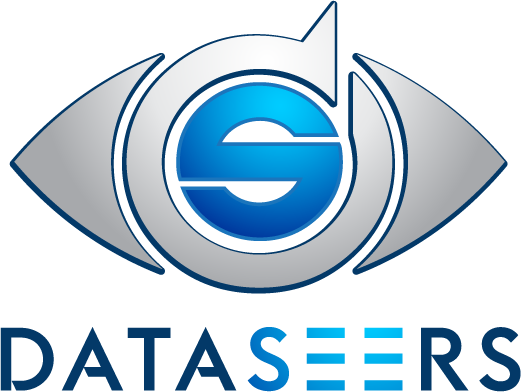The entire article was originally published in Medici.
As an industry, we’ve come a long way in utilizing data analytics and cybersecurity tools to find and prevent payments fraud, an issue we fight daily. However, there is a problem even more nefarious that we as an industry could be addressing more fervently with the use of the data we already have at hand: human trafficking.
Human trafficking cases have hit a 13-year record high, according to a UNODC (United Nations Office on Drugs and Crime) report released in 2018. It is estimated that each year, across the globe, 20.9 million people are trafficked for forced labor and sexual exploitation.
While great efforts have been made to bring attention to this issue worldwide, identifying and fighting human trafficking isn’t easy. Technologies such as facial recognition are being used to attempt to identify trafficked individuals at major airports, but it’s extremely difficult to acquire a database of images of missing people. But we CAN track payments data worldwide. As a $150 billion dollar “industry,” the perpetrators of trafficking rely on banks and credit unions at each step of their value chains. Whether it takes place as a peer-to-peer money transfer using third-party apps, or is completed using cryptocurrencies, it is inevitable that a money trail will be created in the form of data. This could be the game changer, the data used to identify patterns of suspicious activity possibly related to human trafficking.
How data can help solve the problem
Machine learning (ML) and artificial intelligenceAI is a ground-breaking technology that will change the shape of technology and how humans interact with it and business in general. Encompassing machine learning to make a machine ‘think’ like a human and mimic the way a human acts. More (AI) use complex algorithms for pattern recognition. It’s possible to create a dataset that trains an algorithmAt its most general level, an algorithm is a finite, deterministic, and effective problem-solving method suitable for implementation as a computer program. In modern equity and debt markets, many problems are solved and decisions made in this computational, algorithmic manner. For more information please see the SEC website More to identify monetary patterns that could point to signs of human trafficking. For example, traffickers may use so-called “funnel” accounts to transfer large sums of money quickly. In this scenario, money is deposited in an account and then quickly withdrawn from another location. Other red flags include purchases on certain classified ad sites, and use of anonymous payment methods rather than personal checks (source: Fortune, July 17, 2018).
Consider, too, that people who are involved in crimes such as human trafficking do not tend to stay in their “criminal lane,” so to speak. They are most likely also involved in other types of crimes, such as drugs, firearms, tax evasion, theft, coercion, etc. Tracking suspicious data as a whole, including payments, can lead to a tumbling of the criminal world’s house of cards.
Taming the Data Demon
So why has it proven so hard to connect the dots and catch traffickers? Because while data is abundant and available, it is often siloed and segregated, making it impossible to make sense of it. It must go through a careful process of creativity, curation and cleansing before it can be properly used. Secondarily, there are concerns over criminal access to the information: Bad actors would know when such a system has identified their names and/or the names of the persons they are trafficking (the solution to this part of the problem is utilization of a private blockchainA decentralized ledger technology that collects information into digital “blocks” that allow for easier and cheaper sharing. Blockchain can make immediate digitally signed transfers of anything virtual or web-based with no substantial running costs once applications are created – contracts, money, agreements, virtual services and anything like this. Otherwise known as distributed ledger technology. More and encryption so that ONLY verified trusted entities can have access).
Thankfully, there already are companies working to solve this data complexity problem. In 2018, Vodafone, BT, Microsoft, Amazon and Nokia, along with nonprofits, and the UN launched Tech Against Trafficking, a collaborative effort to address forced labor and human trafficking. In 2013, several major banks—including JPMorgan Chase, Citigroup and Bank of America—launched a human trafficking working group with the Manhattan district attorney’s office to collaborate on the best ways to identify trafficking. The Blue Campaign, a partnership between the Department of Homeland Security and the Treasury Department’s Financial Crimes Enforcement Network (FinCEN), provides comprehensive instructions on how to detect suspicious financial activity.
These joint efforts appear to be working. In 2015, financial institutions only submitted 400 reports of suspicious transactions related to human trafficking. In 2016 and 2017, they submitted more than 2,000 each year. (source: Fortune, July 17, 2018)
Call to Action
We need to take all these efforts a step further: Ultimately, we need to create a global database using machine learning (ML) that truly understands the payments data context to solve specific problems that are related to felonious issues like human trafficking.
Payments data may be our best hope. Humans are often trafficked in plain sight. They could be working as household staff, toiling away in the kitchens of extravagant homes or local restaurants, or trafficked for sexual exploitation. But everyone uses some form of currency. It’s time to accept that this is happening right under our noses and start fighting for those who can’t fight for themselves.
# # #
Adwait Joshi is a Chief Seer and an expert on big data analytics. His firm DataSeers provides a big data appliance for banks that uses the concept of a data lake. FinanSeer is a big data appliance that ingests multiple data sources and creates powerful analytics that help drive reconciliation processes, BSA/AML Regulatory Compliance Monitoring, Complex Fraud Detection and a full 360 view on consumer and business data.


